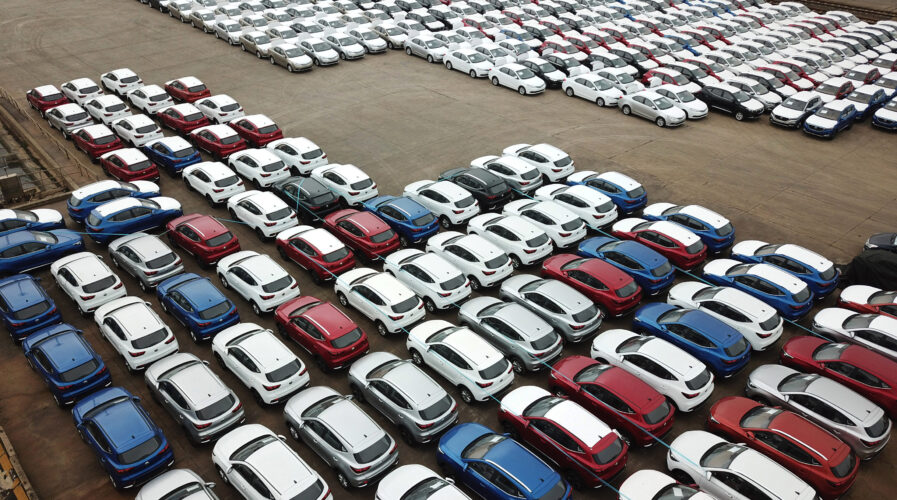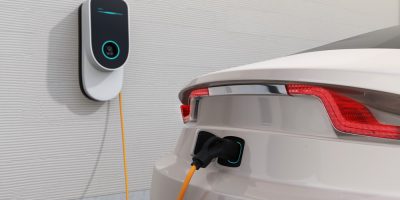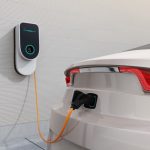
This small city is the electric car capital for China and it has lessons for the rest of the world. (Photo by – / AFP) / China OUT
This small city is the electric car capital for China and it has lessons for the rest of the world
- Almost 30% of cars sold in Liuzhou last year were electric, over five times China’s average.
- The city of 4 million is the effective capital of the biggest EV market in the world.
- Liuzhou’s approach may provide a blueprint for other cities around the world to give up their gas guzzlers to meet ambitious emissions targets.
Since last July, a little-known automaker from Southwest China has been dominating the world’s largest electric car market, outselling bigger players and even Tesla Inc., every month. With a tiny, bare-bones electric vehicle (EV) that starts at just US$ 4,500, the Hongguang Mini is the brainchild of SAIC-GM-Wuling Automobile Co. and US giant General Motors. SAIC-GM-Wuling Automobile Co. is a joint venture between state-backed automakers SAIC Motor Corp. and Liuzhou Wuling Motors Co Ltd.
Based in the city of Liuzhou, the company has sold some 270,000 cars in as short as nine months, making it the best-selling EV in China. But it boasts bigger ambitions for the future, aiming for annual sales of 1.2 million electric cars next year. To put things into perspective, that’s almost equal to the number of EVs churned out by all of China’s carmakers in 2020.
Undoubtedly, it’s an eyebrow-raising target, but even before the Hongguang Mini, Wuling had a track record for producing winners in a market that’s defining the new era of driving. According to WAYS Information Technology, a Guangzhou-based consulting firm, almost 30% of the cars sold in Liuzhou last year were electric, more than five times China’s average – making the city of four million the effective capital of the biggest EV market in the world. A report by Bloomberg indicated that Liuzhou trails only behind Oslo for EV penetration.
What can the electric car market in China teach the world?
BloombergNEF data shows that new-energy vehicles accounted for just under 4.5% of global passenger vehicle sales last year. Despite the subsidies on EV purchases provided by governments from Germany to the U.S., sales still lag well behind those for conventional cars outside of a few pockets in Europe like Norway and Sweden.
Unlike in the west, Liuzhou’s main motivation for embracing EVs was to strengthen the local auto industry, which contributes to about half of the city’s industrial output. This new era of cars is, in fact, a national priority. While not a strategy that can necessarily be replicated elsewhere, it’s paying off for Liuzhou — auto industrial output surged 64% in the first quarter on the back of soaring demand for EVs, which more than tripled.
Liuzhou’s strategy may also be instructive for legacy automakers like General Motors Co. and Volkswagen AG, which are pumping tens of billions of dollars into a high-stakes bet that the future is electric.
The city’s first move was to expose wary residents to EVs, where SAIC-GM-Wuling carried out a free 10-month test-drive campaign in 2017. Over 15,000 people took the automaker’s Baojun E100 for a spin, providing the company with 12,000 items of feedback. The trial was so popular that available slots ran out within minutes, and 70% of test drivers bought a vehicle.
Wuling then studied residents’ needs and driving habits, tailoring the Baojun E100 for a daily commute of less than 30 kilometers. The pint-sized two-seater – about half the length of a Tesla Model X and similar in appearance to the Smart car – comes with a similarly small price tag of around US$5,000. Not only that helps lower the bar for ownership, but it also reduces running costs such as insurance.
To top it off, drivers could earn cash rewards of up to 1,000 yuan (US$160) a year for driving up to 10,000 kilometers. The mini cars – which are everywhere in Liuzhou – also allowed the government to create 15,000 additional parking spots around the city. Their size meant they could fit on previously unusable tracts of land, such as the sidewalk verge. Also, since the cars can be charged from a regular household socket, Wuling was able to install charging points throughout Liuzhou for a fraction of the cost of typical EV infrastructure.
To date, there are around 30,000 charging outlets in the city. In another effort to lure buyers, electric cars can be driven in dedicated bus-lanes, a time-saving privilege during rush hour or traffic jams. To top it off, Liuzhou plans to provide even more support to the sector, by encouraging the localization of supply chains, and backing technology innovation and exports. The aim is to double auto-industry output to 500 billion yuan by 2030, according to the deputy head of the local branch of the Ministry of Industry and Information Technology Mo Chunyan.
READ MORE
- Global concerns rise over alleged cyber hacking activities linked to China
- China’s new tech policies challenge Intel and AMD in a shifting landscape
- Saudi Arabia could become the largest player in the AI industry
- How vulnerable are we to cyber threats in the digital age? Here’s what IBM found
- Wise: Revolutionizing travel and finance in Malaysia


